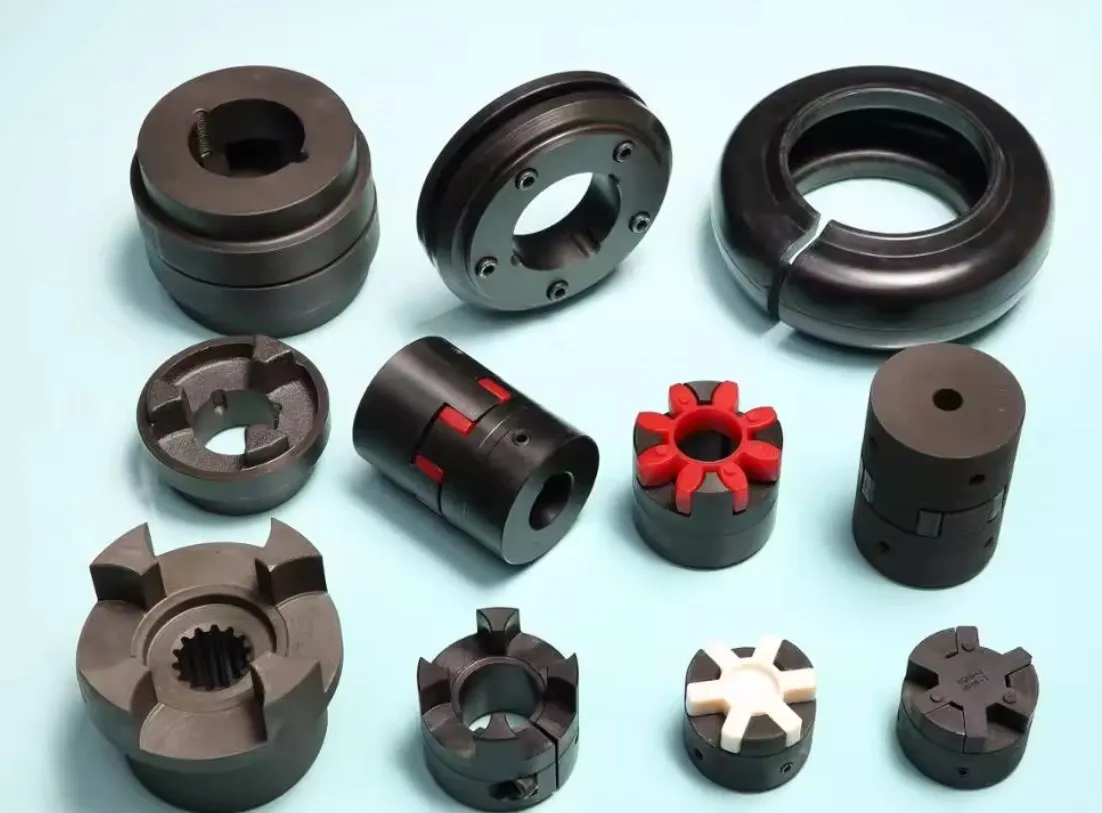Elastic Coupling for Robotics
Introduction to Elastic Coupling
Elastic coupling is a pivotal component in the realm of robotics, offering unparalleled flexibility and motion control. These couplings are designed to transmit torque while accommodating misalignments between shafts.
Understanding the Mechanism
The core function of an elastic coupling lies in its ability to absorb vibrations and shocks. This is achieved through elastic elements that deform under stress, thus maintaining the integrity of the system.
Key Benefits in Robotics
Elastic couplings offer several advantages, including enhanced precision, reduced mechanical wear, and improved operational efficiency. These benefits are critical in high-stakes robotic applications.
Types of Elastic Couplings
Elastic couplings come in various forms, such as jaw couplings, spider couplings, and bellows couplings, each with unique characteristics tailored for specific applications.
Material Composition
Typically, elastic couplings are made from high-grade elastomers, rubbers, or composite materials. These materials provide the necessary flexibility and durability required in robotic systems.
Design Considerations
When designing an elastic coupling, factors such as load capacity, torque requirements, and environmental conditions must be meticulously evaluated to ensure optimal performance.
Applications in Robotics
Elastic couplings are extensively used in robotic arms, automated conveyors, and precision machinery, where they facilitate smooth and accurate motion control.
Performance Metrics
Key performance metrics for elastic couplings include torsional stiffness, damping capacity, and angular misalignment tolerance, which are essential for maintaining system integrity.
Maintenance and Durability
Regular maintenance of elastic couplings involves inspecting the elastic elements for wear and tear, ensuring longevity and reliability of the robotic system.
Installation Guidelines
Proper installation of elastic couplings necessitates precise alignment and secure fastening to prevent slippage and ensure efficient torque transmission.
Technological Advancements
Recent advancements in material science and engineering have led to the development of high-performance elastic couplings with superior load-bearing capabilities and extended service life.
Case Studies
Several case studies highlight the successful implementation of elastic couplings in robotics, demonstrating their efficacy in enhancing operational efficiency and reducing downtime.
Future Trends
The future of elastic coupling technology in robotics is promising, with ongoing research focused on developing smart materials and IoT-enabled monitoring systems.
Conclusion
Elastic couplings are indispensable in modern robotics, offering unmatched versatility and performance. As technology evolves, these components will continue to play a crucial role in advancing robotic applications.

High Elastic Rubber Coupling
Superior Flexibility
High elastic rubber couplings provide exceptional flexibility, accommodating angular, radial, and axial misalignments with ease.
Vibration Damping
These couplings excel in damping vibrations, thereby protecting the mechanical components and extending the lifespan of the equipment.
Noise Reduction
By absorbing shocks and vibrations, high elastic rubber couplings significantly reduce operational noise, leading to a quieter working environment.
Durability Under Stress
Manufactured from high-quality rubber, these couplings exhibit remarkable durability even under continuous stress and high-load conditions.
Cost-Efficiency
The longevity and reliability of high elastic rubber couplings contribute to cost savings by minimizing maintenance and downtime.

What are flexible couplings used for?
Compensating Misalignments
Flexible couplings are designed to accommodate various types of misalignments, including angular, parallel, and axial, ensuring seamless torque transmission.
Vibration Isolation
These couplings play a crucial role in isolating vibrations, thereby protecting sensitive machinery and maintaining operational stability.
Shock Absorption
Flexible couplings absorb mechanical shocks and impacts, which helps in preventing damage to connected equipment and enhancing system longevity.
Torque Transmission
They efficiently transmit torque between rotating shafts, ensuring smooth and consistent power flow within mechanical systems.
Reducing Wear and Tear
By mitigating misalignments and absorbing shocks, flexible couplings reduce the wear and tear on mechanical components, leading to prolonged equipment life.

What are the three types of coupling?
Rigid Couplings
Rigid couplings provide a solid connection between two shafts, offering high torque transmission but lacking flexibility for misalignments.
Flexible Couplings
Flexible couplings, including elastic couplings, allow for various misalignments and vibrations, making them suitable for dynamic applications.
Fluid Couplings
Fluid couplings use hydraulic fluid to transmit power, offering smooth torque transmission and protection against mechanical overloads.
How to Choose or Customize the Right Elastic Coupling
Load Capacity
Determine the maximum load the coupling will need to handle to ensure it can withstand operational stresses without failure.
Torque Requirements
Evaluate the torque requirements of your application to select a coupling that can efficiently transmit the necessary power.
Misalignment Tolerance
Consider the types of misalignments (angular, parallel, axial) that the coupling needs to accommodate to maintain system integrity.
Environmental Conditions
Assess the operating environment, including temperature, humidity, and exposure to chemicals, to choose materials that offer optimal performance.
Installation Space
Ensure the coupling fits within the available installation space, taking into account the size and configuration of the mechanical system.

About HZPT
HZPT, established in 2006, is a leading manufacturer specializing in the development and production of high-precision couplings, ball screw support units, motor brackets, and motion modules. Our product line includes servo motor couplings, stepper motor couplings, miniature motor couplings, and encoder couplings.
Technical Excellence
Our advanced technology ensures the highest quality and performance of our coupling products, meeting the rigorous demands of modern applications.
In-House R&D Center
We have a dedicated research and development center that continually innovates and improves our products to stay ahead of industry advancements.
Comprehensive Processing and Testing Systems
Our in-house processing and testing systems guarantee precision and reliability, ensuring that every product meets stringent quality standards.
ISO 9001:2015 Certification
We are ISO 9001:2015 certified, reflecting our commitment to maintaining high-quality management systems and customer satisfaction.
Global Recognition
Our products are widely recognized and used by top-tier clients from Japan, the USA, Germany, Israel, Malaysia, Singapore, Taiwan, and beyond.
As a professional producer and supplier of elastic couplings, HZPT invites you to explore our comprehensive product range. With our state-of-the-art technology and extensive expertise, we are well-equipped to provide solutions tailored to your specific needs. Partner with us to experience the advantages of our high-precision couplings and enhance the efficiency and reliability of your mechanical systems.